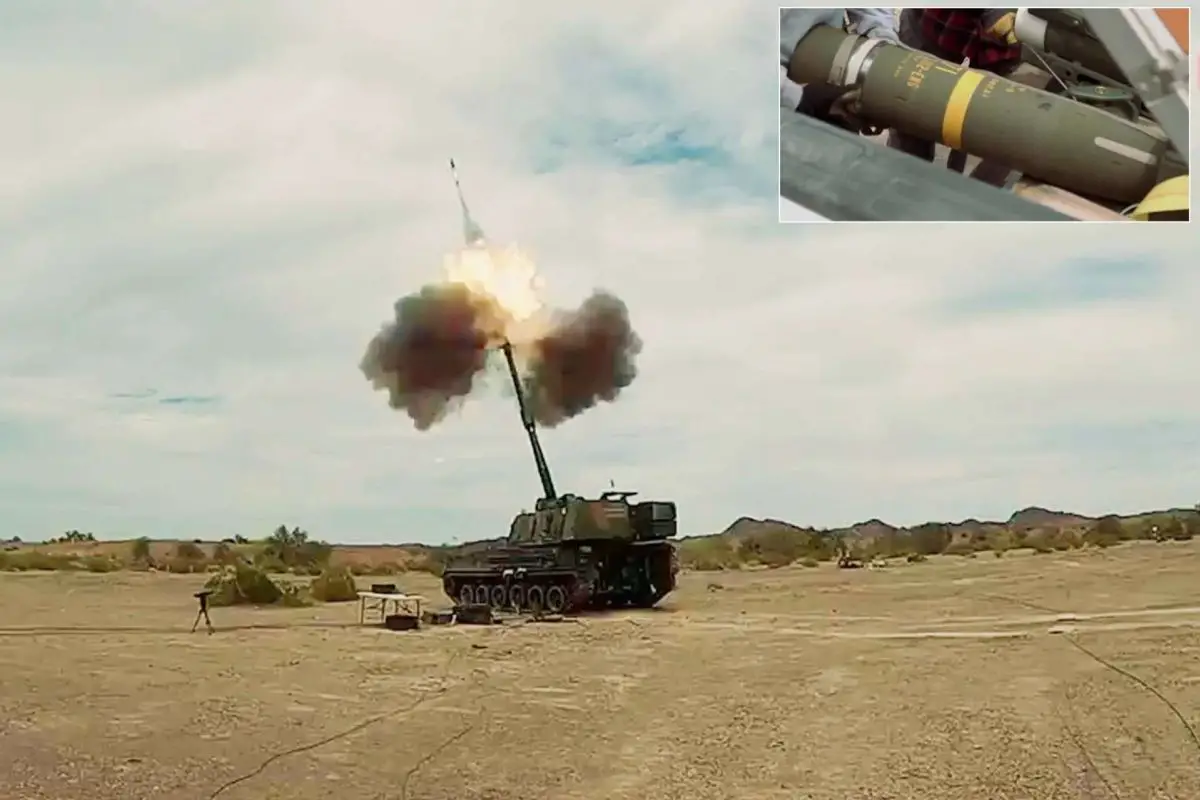On August 6, 2024, Hanwha Aerospace announced that the K9 Thunder 155mm self-propelled howitzer had successfully demonstrated interoperability with Raytheon’s M982A1 Excalibur precision-guided extended range 155mm artillery projectile. This was confirmed following a live-firing test conducted in April at the U.S. Army Yuma Proving Ground, near the Arizona-California border.

The K9 Thunder had successfully demonstrated interoperability with Raytheon’s M982A1 Excalibur precision-guided extended range 155mm artillery projectile, specifically targeting an objective nearly 50 kilometers away. (Picture source: Yuma Proving Ground)
The purpose of the test was to verify the K9’s compatibility with Excalibur Ib projectiles, specifically targeting an objective nearly 50 kilometers away using various fuze function modes. The test results indicated that a projectile fired from the K9 Thunder achieved a circular error probability (CEP) of less than one meter in the Point Detonating mode, effectively hitting the target. Additionally, another projectile detonated five meters above the target in the Height of Burst mode, demonstrating its capability to engage targets with precision.
This demonstration establishes the K9 as one of the artillery systems globally verified to operate with Excalibur guided munitions, which have been deployed since 2014. The Excalibur projectile, developed through collaboration between Raytheon Missiles & Defense and BAE Systems Bofors, is designed for precision strikes, with an accuracy that confines targets within a radial miss distance of fewer than two meters. This precision extends the operational range of various artillery systems, with the .39-caliber variant reaching 40 kilometers, the .52-caliber extending to 50 kilometers, and the .58-caliber capable of striking targets at 70 kilometers. The Excalibur’s efficiency allows it to replace multiple conventional munitions with a single, targeted strike.
The M982 Excalibur is a 155mm GPS-guided, extended-range artillery shell designed to deliver accurate, first-round effects in various weather conditions, with a Circular Error Probable (CEP) of about four meters. The projectile is capable of engaging targets at ranges up to 40 kilometers, making it suitable for precision strikes on high-value targets while reducing collateral damage. First deployed in 2007 during operations in Iraq, the Excalibur has also been used in other conflicts, including in Afghanistan.
